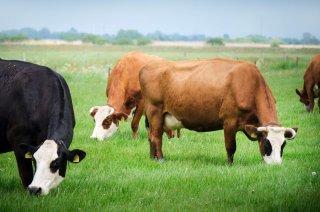
category_news
Identifying breed-specific genomic regions in GWH breed to detect functional candidate genes
The unique features of the Groningen White Headed (GWH) cattle breed can help to reduce the susceptibility to eye lesions. A recent study found functional candidate genes of this phenotype which may help to prevent eye diseases in cattle populations worldwide.
Traditional native breeds are an important source of genetic variability adapted to local environments. They might harbor genetic variants unique to the breed due to the production system and ecosystem adaptation and, for example, provide resistance to local diseases and/or extreme climatic conditions. Detailed analysis of the genomic structure of those native breeds can contribute to identify genes and variants with a significant impact on the adaptation processes that have shaped animal phenotypes. Consequently, this information may be used to optimize breed-specific breeding programmes.
Identifying breed-specific genomic candidate genes
In a recently published study in PLoS ONE, researchers from Wageningen University & Research (WUR) and other research institutions aimed to identify and characterize genomic regions that differ between the native Dutch GWH breed and other cattle breeds. Their main focus was on the identification of candidate genes associated with coat colour and/or eye-protective phenotypes.
The researchers used an integrative approach based on the combined use of genome-wide association study, selective sweeps and runs of homozygosity analyses. They identified several regions of the cattle genome containing breed-specific genetic markers and candidate genes that are functionally related to pigmentation (e.g. PDE4D), ultraviolet protection (e.g. ERCC8), or retinal degeneration (e.g. CWC27), and are probably associated with the GWH specific pigmentation and/or eye-protective phenotypes. These findings contribute to the characterization of the genetic background of the GWH breed and provide insights for further investigating the biological pathways and causative mutations influencing skin pigmentation and/or eye-protective phenotypes.
This study is part of the OPTIBOV project financed within the Long term European African research and innovation Partnership on food and nutrition security and sustainable Agriculture (LEAP-Agri) programme.
